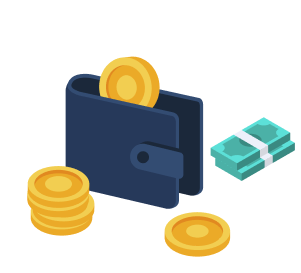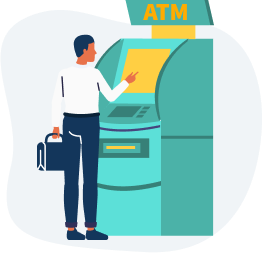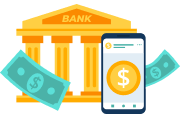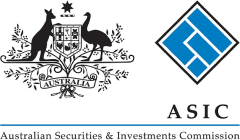When you’re planning a trip abroad, it’s important that your travel money goes as far as possible. Finding the best currency exchange rates means you’ll have more to spend. You have a lot of options when it comes to exchanging currency, but here are the best ways to get a better rate:
- Order online instead of going to a store
- If you do head into a store, ask for a better exchange, particularly if you are exchanging more than $1000
- Always shop around to get the best currency exchange rates, as they make a big difference in how much travel money you’ll get
- Don't use your everyday debit or credit card unless they waive the foreign currency conversion fees
- It can be cheaper to buy currency overseas in locations that are very popular with Australians like Bali or Ko Samui

How to get travel money at the best currency exchange rates
Everyone wants to keep currency exchange fees to a minimum, and we cover the main ways to get travel money below.
Ways to save on your travel money
The following options will all help you get the best exchange rate:
- Buy foreign currency online and have it delivered to your home.
- Use a debit or credit card without a foreign transaction fee to spend overseas.
- Use a prepaid debit travel card like the Mastercard Prepaid Travel Card.
- Get travel money from your bank.


Avoid these options for getting travel money
We don’t recommend these options as they mean you’ll spend more than you need to in hidden exchange rate and other fees:
- Exchange money at an airport kiosk or counter.
- Get travel money after you arrive overseas.
- Use an ATM in another country.
- Spend using Traveler’s Checks.
Read on for details on the advantages and disadvantages of each option.
Buying foreign currency online before your trip
Planning ahead is always a good idea, and you can order currency before you go overseas. You have a few options for buying travel money online, although rates do vary widely between providers. Popular travel money companies where you can order through a website include S Money, Travelex, Travel Money Oz and several other options.
When you order your foreign currency online, you can normally have the money delivered to your home in a few days. In some cases you may be able to pick it up at a travel exchange shop, counter, or kiosk.


Advantages of buying travel money online before your trip
- You will have time to shop around to find a good deal.
- You can get better rates than at an airport or other kiosk.
- The travel money can be delivered to your home quickly and easily.
- You will have a clear idea of your budget and how much currency you’re getting.
Disadvantages of buying travel money online before your trip
- You do need to plan ahead, as it can take a few days for you to get the money delivered.
- Some travel money providers can be expensive.
It’s definitely worth shopping around when you buy travel money online, as exchange rates and fees can vary widely between providers.
Despite these fees, ordering travel money online from the right provider can be fast and convenient. If you shop around you won’t pay too much in exchange rate fees either.
How to buy foreign cash online with S Money

1. Choose your currency

2. Verify your ID and pay
By law, we need to make sure you are who you say you are. You’ll also need ID to collect.

3. Collect your currency
Choose pick up in the CBD or delivery to your door. We’ll send you order updates all the way.
Spending on a credit card or debit card overseas
Credit and debit cards on the Visa and Mastercard networks are accepted at millions of shops, restaurants, merchants, and other locations around the world. If you have an American Express or Discover card, it’s possible they might be accepted too. We’d recommend sticking with the two biggest networks though.

Advantages of using a credit or debit card for travel money spending
- Fast and convenient, all you need is your card.
- Widely accepted by merchants around the world.
- Safer than cash as you can cancel your card if you lose it.
Disadvantages of using a credit or debit card for travel money spending
- There are additional fees you may need to pay.
- You may get a less competitive exchange rate.
- Cards on some networks like Amex or Discover may not be usable at all locations.
Let’s explain those fees and exchange rates.

Foreign transaction fees when spending money
Most debit and credit cards will automatically charge you a fee when you use the card outside your own country. This fee is typically three percent of the total transaction amount, so if you spend $100 overseas, you’ll be charged $3 extra for using the card. Ouch.
Not every credit or debit card charges a foreign transaction fee, and the best way to find out is by reading through the fine print. We know it’s not ideal, but if you search the name of your card and “foreign transaction fee” that should tell you what you need to know. Typically, cards issued by Discover and Capital One do not have foreign transaction fees.
Hidden exchange rate fees
The other factor that affects how much you’ll pay when you use a card is the exchange rate you get. Sometimes, these rates are set by your card provider, like your bank. Sometimes, they’re set by the card network, like Visa or Mastercard. Let’s see how they stack up:
If you use Mastercard to spend $1,000 Australian dollars in US dollars, the base, interbank exchange rate for $1,000 Australian dollars is $651 US dollars.
Mastercard’s exchange rate is $654.3 US dollars or $3.30 more.
Despite this, spending on a credit or debit card overseas can still be one of your better options.
Withdrawing travel money from an ATM (Automatic Teller Machine)
You can withdraw money from a foreign ATM or cash machine when you’re in another country. Unfortunately, if you do use an ATM while overseas, you’re likely to pay a number of fees that can quickly add up. Because of this, we recommend making as few withdrawals as possible.
Advantages of withdrawing travel money from an ATM overseas
- ATMs and cash machines are widely available and easily accessible.
- Withdrawing money is fast and convenient.
Disadvantages of withdrawing travel money from an ATM overseas
- There are additional fees you may need to pay.
- You may get a less competitive exchange rate.
- Withdrawing money on a credit card will be treated as a cash advance.
We’ll break down those fees for when you take travel money out of an ATM below.


Foreign transaction fees at an ATM
If you withdraw money at an ATM, your debit or credit card provider may charge you a three percent foreign transaction fee. That can quickly add up, as withdrawing $200 or the equivalent in a local currency will cost you $6 just from this fee.
Out-of-network ATM fee
If the ATM is not in the network of your home bank or one of their partners, you will probably be charged an out-of-network fee. These fees can be up to around $5 per transaction.
Foreign operator ATM fee
Many ATM operators and banks will charge an additional fee for you to use an ATM if you are not a customer of that bank.
Hidden exchange rate fees
Another factor that affects how much you’ll pay when you use a card at an ATM is the exchange rate you get. These rates are typically less competitive than you will find elsewhere.
Credit card cash advance fee
If you take money out of an ATM using a credit card, it’s very likely your credit card provider will treat it as a cash advance. That means you will be charged interest from the moment you make the withdrawal, and you may also be subject to a higher interest rate.
This combination of fees can mean you spend a lot more if you use an ATM, so we recommend other ways of getting travel money.
Spending on a prepaid travel card overseas
Several travel money and card providers like Travelex and Mastercard offer prepaid debit cards that allow you to spend money overseas. You apply for a card in the US, top it up with currency, then use it like a normal card to spend in another country or withdraw cash from an ATM.
Advantages of spending on a prepaid travel card
- It’s fast and convenient to pay with a prepaid travel card.
- These types of cards are accepted all over the world.
- You can cancel your card if you lose it.

Disadvantages of spending on a prepaid travel card
- There are additional fees you may need to pay.
- You will get a less competitive exchange rate.
Unfortunately, like several other travel money options involving debit or credit cards, you will very likely need to pay additional fees.
Foreign transaction fees when spending money
Even prepaid debit travel cards may charge you a foreign transaction fee when you use the card overseas. This fee is typically three percent of the total transaction amount. Check the small print to see if this is a fee you’re likely to be charged.
Poor exchange rates
Some prepaid travel cards, such as the Travelex Money card, offer poor exchange rates. The hidden fees on these cards when you pay in a different currency could be more than five percent of the total amount.
Although travel cards can be a useful option, be sure to compare the exchange rates you’ll get before deciding if they’re right for you.
Using Traveler’s Checks when you’re overseas
American Express Travellers Cheques were once a very popular way to convert dollars into another currency. With the rise of other ways to get travel money and spend overseas, Traveler’s Checks have largely fallen out of favour.
While they are still trusted by some as a way to carry money safely. these cheques are no longer widely accepted and most merchants will not accept them. Additionally, banks may charge you to cash them in. We don’t recommend Traveler’s Checks, due to their low acceptance rate.
Buying foreign currency at a local bank
Many Australian banks, both nationwide, household names and local financial institutions allow you to buy and sell foreign currency at their branches.
Banks are trusted, safe ways to exchange money for travel. The service is not particularly or convenient so it's not the easiest way to change money. Some bank exchange rates mean you’ll get less foreign currency for your Australian dollars (AUD).
Let’s explore the difference that these exchange rates can make.

Ordering currency online through a bank
Westpac, the Commonwealth Bank of Australia and National Australia Bank all use Travelex to sell foreign currency online. This means that you can order it online even if you are not a customer of that bank. You'll need your ID handy before you place your order and can either use a card or Bpay for your currency. They can't take it directly from your bank account.
ANZ foreign exchange is slightly different. You have to be an ANZ customer, but it means that you don't need to provide any ID or pay for your order afterwards. They simply take it out of your bank account.
Every bank charges a different fee to buy or sell foreign currency in cash depending on how much you are buying, how you are paying for it and what services you need.
Flat fees
National Australia Bank (NAB) is the only big 4 bank that doesn't charge a fee to buy currency online or in branch.
Westpac charge a flat $4 for online currency exchange orders.
ANZ charge 1% of the AUD equivalent value for each currency purchased, with a minimum charge of AUD $8 per currency. It's important to know that this fee is the same regardless of if you order the currency online or in one of their dedicated ANZ foreign exchange centres. If you are an ANZ customer, they will waive this fee.
CBA currency exchange charge 1% of the order value with a minimum of $10.
Card processing fees
Most of of the banks use Travelex to provide the currency to you which means you don't have to be a customer to use their services. It also means you can use a credit or debt card. Again, these card processing fees vary between banks, but are usually between 1 and 2%. This may not seem like that much, but it can really add up if you are buying more than a few hundred dollars worth of currency.
Exchange rate margins
The 'hidden' exchange rate margin is what they charge by giving you a less favourable exchange rate.
For example, if xe.com or google currency converter is showing a AUD/USD exchange rate of 0.6600, but the bank is selling it for 0.6200 - the difference between 0.6600 and 0.6200 is their exchange rate margin.
The worst part about this fee is that it's really hard to calculate it.
Currency exchange overseas
You’re not just limited to getting your travel money before your trip, you can also exchange currency once you arrive overseas. Many Australians ask the question, is it cheaper to buy currency overseas or before you leave?
Unfortunately, it's not a simple answer. In most cases, it is cheap to buy currency in Australia but there are some important exceptions.
It can be cheaper to exchange your Australian dollars overseas in locations and countries that Australians head to more frequently. These include Bali, Singapore and parts of Thailand like Ko Samui and Bangkok.

Conclusion
Getting a great exchange rate to change your money isn't complicated. It does require a little bit of research to choose the best option.
- Plan to get your travel money a few days in advance of your trip.
- Create a realistic budget for how much you will need when you travel.
- Always shop around to get the best currency exchange rates, as they make a big difference in how much travel money you’ll get.
- Generally, ordering online, spending on credit and debit cards, or exchanging through your bank will get you the best rates.
Just remember that the more work you do find a better rate, the more money you can save for your trip!

